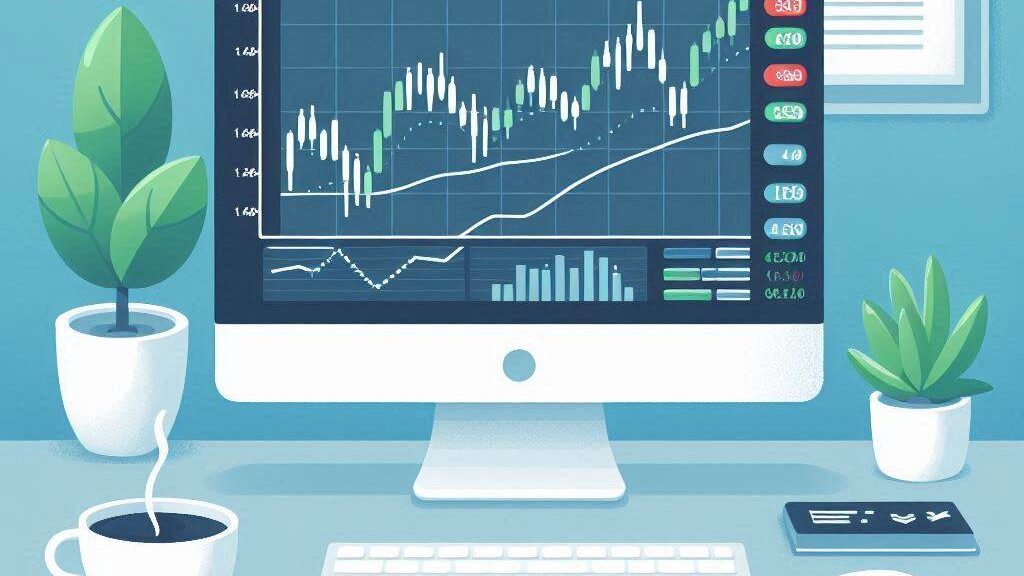Forex for Beginners: Your Complete Guide to Currency Trading
Unveiling the Forex Market: A Beginner’s Introduction
The foreign exchange market, or Forex for short, is the largest and most liquid financial market in the world. It’s where currencies are traded against each other, with trillions of dollars changing hands every day. But what exactly is Forex, and how does it work?

What is Forex?
Forex is the decentralized global market where currencies are bought and sold. Unlike the stock market, which has a physical location, the Forex market operates electronically 24 hours a day, five days a week. This means you can trade currencies anytime, anywhere, as long as you have an internet connection.
Why Trade Forex?
There are several reasons why people choose to trade Forex:
- High Liquidity: The Forex market is incredibly liquid, meaning there are always buyers and sellers available. This makes it easy to enter and exit trades quickly.
- Accessibility: You can start trading Forex with a relatively small amount of capital. Many brokers offer leverage, which allows you to control larger positions with a smaller investment.
- Volatility: The Forex market is known for its volatility, which means prices can fluctuate rapidly. This volatility can create opportunities for traders to profit, but it also means there’s a higher risk of losses.
Forex Basics: Understanding the Fundamentals
Before you start trading Forex, it’s important to understand some basic concepts:
- Currency Pairs: Currencies are traded in pairs, such as EUR/USD (Euro vs. US Dollar) or GBP/JPY (British Pound vs. Japanese Yen). The first currency in the pair is called the base currency, and the second is the quote currency.
- Pips: A pip is the smallest unit of price movement in a currency pair. Most currency pairs are quoted to four decimal places, so a pip is usually the last decimal place.
- Lots: A lot is a standardized unit of currency. The standard lot size is 100,000 units of currency, but there are also mini lots (10,000 units) and micro lots (1,000 units).
- Leverage: Leverage allows you to control a larger position with a smaller investment. For example, with 100:1 leverage, you can control a $100,000 position with just $1,000.
- Margin: Margin is the amount of money you need to have in your account to open a leveraged position.
- Spread: The spread is the difference between the bid (the price at which you can sell a currency) and the ask (the price at which you can buy a currency).
Forex Trading Strategies: Finding Your Approach
There are many different Forex trading strategies, each with its own strengths and weaknesses. Here are a few popular approaches:
- Technical Analysis: Technical analysis involves using charts and indicators to identify patterns and trends in the market.
- Fundamental Analysis: Fundamental analysis involves analyzing economic and political factors that can affect currency prices.
- Scalping: Scalping is a short-term trading strategy that involves making quick profits from small price movements.
- Day Trading: Day trading involves opening and closing trades within the same day.
- Swing Trading: Swing trading involves holding trades for several days or weeks.
Risk Management: Protecting Your Capital
Risk management is crucial in Forex trading. Here are some tips to help you protect your capital:
- Use stop-loss orders: A stop-loss order is an order to automatically close a trade if the price reaches a certain level. This can help you limit your losses.
- Don’t risk more than you can afford to lose: Never invest more money in Forex than you can afford to lose.
- Diversify your portfolio: Don’t put all your eggs in one basket. Diversify your portfolio by trading different currency pairs.
- Keep a trading journal: A trading journal can help you track your progress and identify areas where you can improve.
Getting Started with Forex Trading
If you’re ready to start trading Forex, here are the steps you need to take:
- Choose a Forex broker: There are many Forex brokers to choose from, so it’s important to do your research and find one that’s reputable and regulated.
- Open a trading account: Once you’ve chosen a broker, you’ll need to open a trading account. This usually involves providing some personal information and making a deposit.
- Download a trading platform: Your broker will provide you with a trading platform, such as MetaTrader 4 or MetaTrader 5. This is where you’ll place your trades.
- Start practicing: Before you start trading with real money, it’s a good idea to practice on a demo account. This will allow you to get familiar with the platform and test out different strategies without risking any capital.
Conclusion: Your Forex Journey Begins
Forex trading can be a challenging but rewarding endeavor. With the right knowledge, tools, and mindset, you can achieve your financial goals. Remember, it’s important to start slowly, learn from your mistakes, and never stop learning.









